TRADITIONAL CUSTOMS & PRACTCES
Traditional
Beauty Treatment
Mehndi
Henna or Maruthani as it is known in Tamil is derived from a plant. The
leaves of the plant have been used in India traditionally during
auspicious occasions. The leaves from the tree were plucked and ground
into a thick paste, which was applied in geometric designs on the palm
& sole, before retiring for the night & is allowed to dry
overnight. The following morning when the dried portion is washed off, a
red pigmentation is left behind on the applied area. This style was
mostly prevalent in South India, where more often a circular patch is
applied in the centre of the palm & a cap is formed over the
fingers. This style of decoration is also followed by dancers.
In the North, the habit of creating exquisite & intricate designs on
the palm as well as the forearm has been in practice. In this case a
dry powder form of henna is used. Mehndi is so popular & auspicious
in the North, that during weddings a special function is celebrated
exclusively for applying henna to the bride.
The mehndi powder has to be made into a fine paste with a few drops of
fresh lime juice. A cone or thin stick is used to apply the intricate
designs. Syrup of fresh lime juice mixed with sugar is periodically
applied in the semi dry stages, to prevent flaking. When the surface is
wiped clean after 5-6 hours, a red pigmentation is left behind. Henna is
a proven coolant for the system & is used for medicinal purposes
too. It is also used to dye the hair.
Mehndi Designs
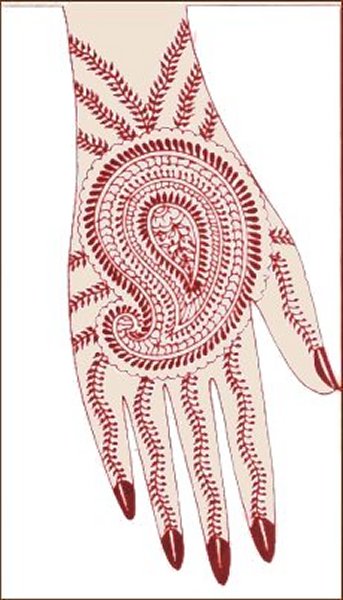 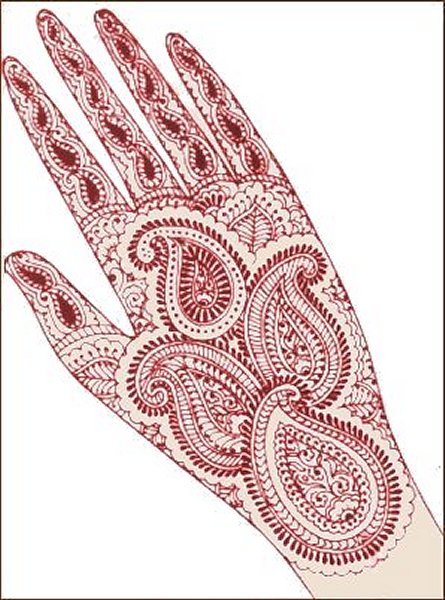 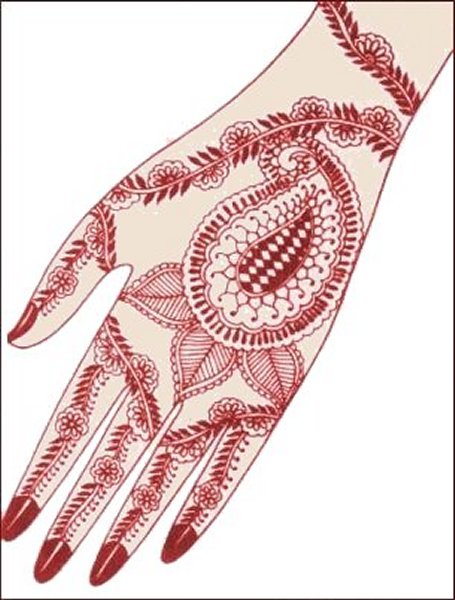 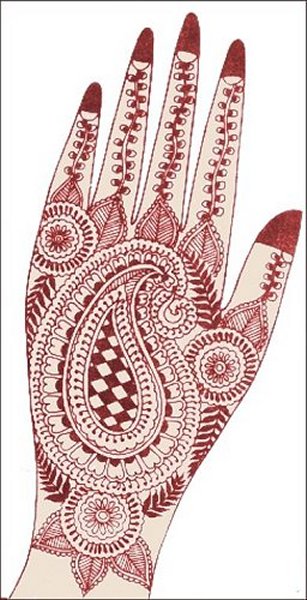
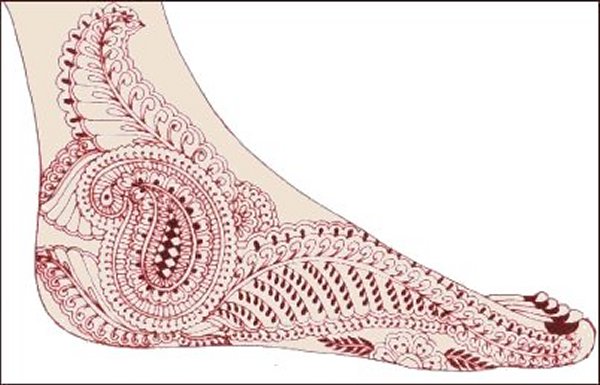 
|